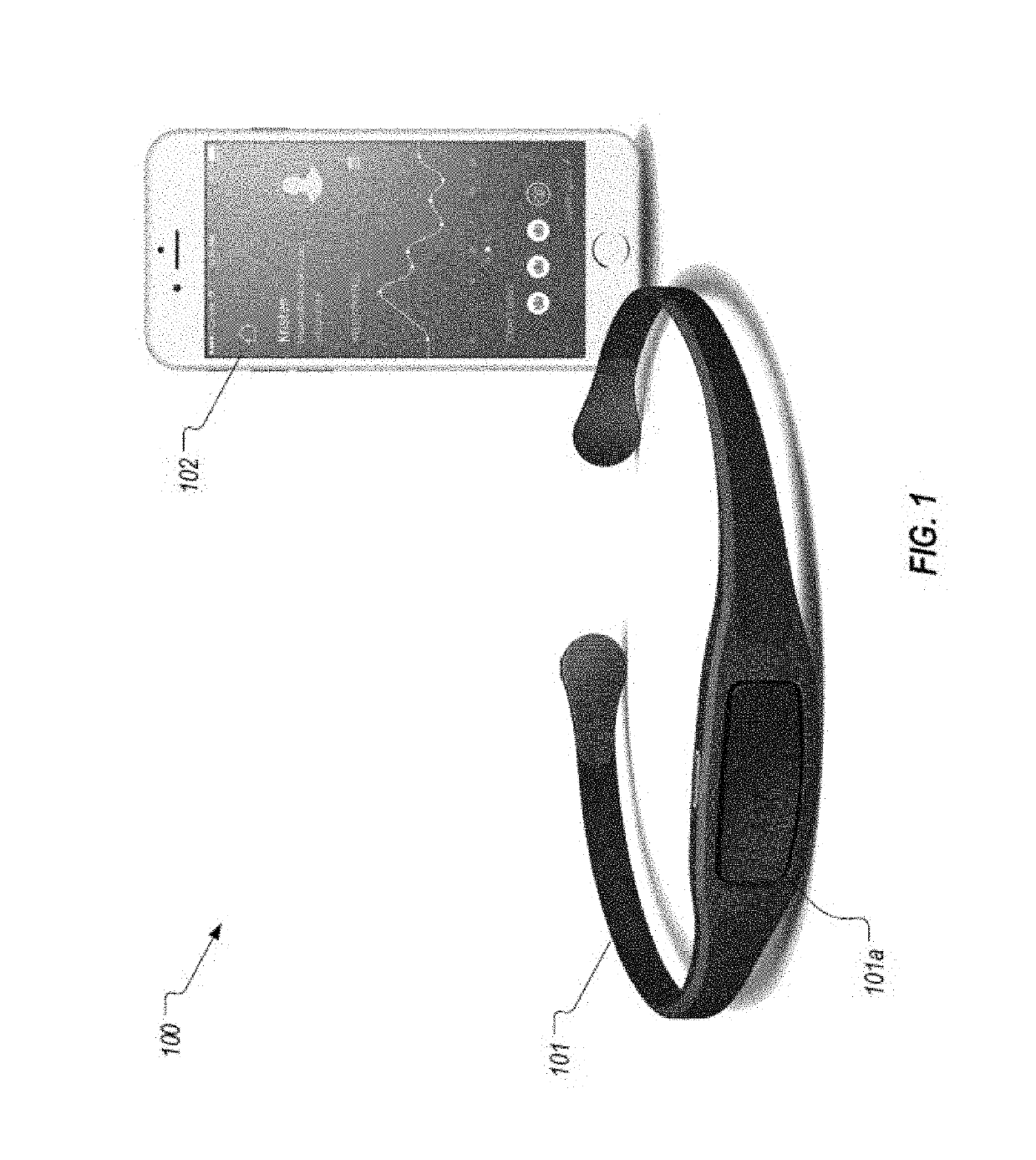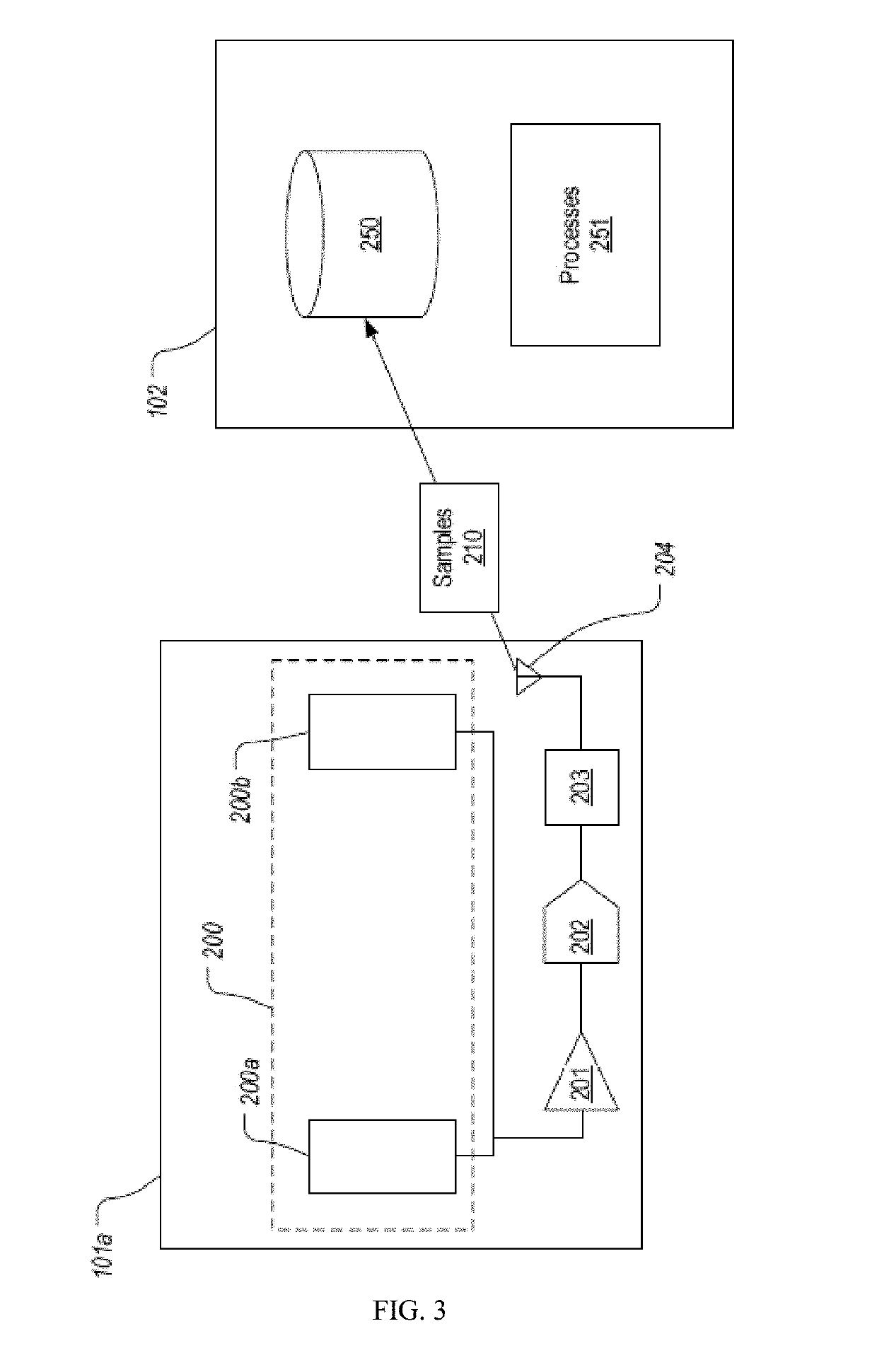Device and system for monitoring and treating muscle tension-related medical conditions
a technology for muscle tension and medical conditions, applied in the field of muscle tension related medical conditions, can solve the problems of inability to achieve widespread use of the approach, inability to meet the requirements of the patient, and inconsistent results, so as to prevent the onset of acute and/or chronic pain conditions, reduce excess tension, and reduce stress-induced muscle tension
- Summary
- Abstract
- Description
- Claims
- Application Information
AI Technical Summary
Benefits of technology
Problems solved by technology
Method used
Image
Examples
example 1
[0111]This example shows the results of a pilot study completed in April 2017. The objective of the study was to determine the effects of using the present invention on headache frequency and intensity on human subjects.
[0112]Six subjects were enrolled in the New York City area with varying headache conditions (such as tension headaches, migraines, and TMJ (temporomandibular joint) pain. The study began with a four-week baseline period during which subjects recorded the frequency and intensity of their headache condition. This was followed by a four-week treatment period, in which subjects were instructed to use Halo™ headbands and app each day for a period of 15 minutes, recording their pain conditions and other use experiences. Headache frequency was reported as episodes per week. Headache intensity was subjectively reported on a standard scale of 0-10 (see Loder et al., Measuring pain intensity in headache trials: which scale to use? Cephalalgia 32(3) 2012, 179-182). Results are ...
example 2
[0114]This example shows results from evaluation of a prototype mobile system of the present invention conducted on a human subject. The subject was a 28-year old American female in New York City with a history of recurring headaches. Tests were conducted in three stages between December 2016 and March 2017. In the first stage the subject used various over-the-counter analgesics at recommended dosages to manage headache symptoms (Sessions 1 and 2). Conditions were self-assessed prior to drug administration according to a standard headache scale, and then qualitatively reassessed for the extent of relief. In the second stage, the subject took an analgesic at the same time of using a prototype Halo™ system for 5 min (Session 3). In the third stage the subject used the prototype Halo™ system alone for a duration of 10 min on three occasions (Sessions 4-6). Results are shown below in Table 2:
TABLE 2HA Intensityprior toHalo (TM)Sessiontreatment*Drug treatmenttreatmentRelief19ibuprofen + ...
PUM
| Property | Measurement | Unit |
|---|---|---|
| Temperature | aaaaa | aaaaa |
| Biological properties | aaaaa | aaaaa |
| Tension | aaaaa | aaaaa |
Abstract
Description
Claims
Application Information
 Login to View More
Login to View More - R&D
- Intellectual Property
- Life Sciences
- Materials
- Tech Scout
- Unparalleled Data Quality
- Higher Quality Content
- 60% Fewer Hallucinations
Browse by: Latest US Patents, China's latest patents, Technical Efficacy Thesaurus, Application Domain, Technology Topic, Popular Technical Reports.
© 2025 PatSnap. All rights reserved.Legal|Privacy policy|Modern Slavery Act Transparency Statement|Sitemap|About US| Contact US: help@patsnap.com



